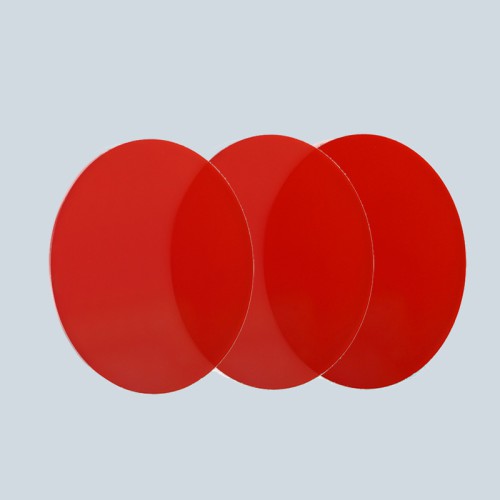Longpass Filter
A longpass filter, also known as a low-cut filter or a high-pass filter in optics, is a type of optical filter that transmits wavelengths longer than a specified cutoff wavelength (also known as the edge wavelength or the transition wavelength) and blocks or significantly attenuates wavelengths shorter than this cutoff point. In essence, it sets a minimum threshold for the wavelengths that can pass through it.
Tags: Optical Filter
A longpass filter, also known as a low-cut filter or a high-pass filter in optics, is a type of optical filter that transmits wavelengths longer than a specified cutoff wavelength (also known as the edge wavelength or the transition wavelength) and blocks or significantly attenuates wavelengths shorter than this cutoff point. In essence, it sets a minimum threshold for the wavelengths that can pass through it.

Key Features of Longpass Filters:
Cutoff Wavelength (λc):
This is the critical wavelength at which the filter starts to transmit light efficiently. Below this wavelength, the transmission is either blocked or greatly reduced.
Transition Width:
The range over which the filter transitions from blocking to passing wavelengths. A narrower transition width generally indicates a sharper cut-on edge, which can be important in applications requiring precise wavelength separation.
Passband Transmission:
Describes how much of the light in the passband (wavelengths longer than the cutoff) is transmitted. High-quality filters strive for high transmission in this region.
Blocking Range Transmission:
Specifies how well the filter blocks light in the range below the cutoff wavelength. Ideally, this should be minimal to prevent contamination from unwanted shorter wavelengths.
Applications of Longpass Filters:
Longpass filters are widely used in various industries and scientific disciplines due to their ability to exclude shorter wavelengths effectively:
Imaging and Photography:
They can be used to block UV or blue light, enhancing contrast and reducing noise in images, particularly in infrared photography or when dealing with fluorescence.
Spectroscopy:
By eliminating shorter wavelengths, they facilitate the analysis of longer wavelength emissions or absorptions, which are characteristic of certain materials or processes.
Medical and Biomedical Applications:
In applications like near-infrared (NIR) spectroscopy or imaging, they help isolate the NIR region for tissue analysis or oximetry, where blood oxygenation levels are measured.
Machine Vision and Industrial Inspection:
They enhance visibility of specific features by removing unwanted light, improving the performance of automated inspection systems.
Optical Communications:
In fiber optics, they can be employed to separate different communication channels by filtering out unwanted signals.
Types of Longpass Filters:
Interference Longpass Filters:
These rely on constructive and destructive interference of light waves between multiple thin-film layers to create a sharp cutoff at the desired wavelength.
Absorptive Longpass Filters:
Made using materials that absorb wavelengths below the cutoff point, these filters gradually transition from blocking to passing wavelengths, making them suitable for applications not requiring a sharp cutoff edge.
Each type has its advantages, with interference filters offering higher transmission and steeper edges but potentially being angle-sensitive, while absorptive filters may provide more robust performance under varying angles of incidence but with potentially lower transmission and a softer cutoff.
Related Products
Dichroic Mirrors
An optical filter is a device that selectively transmits a portion of the optical spectrum while rej..
Bandpass Filter
Hard film bandpass filter structureBandpass filters can be constructed by depositing layers of mater..
Shortpass Filter
A shortpass filter, also known as a high-cut filter or a low-pass filter in optics, is a type of opt..




